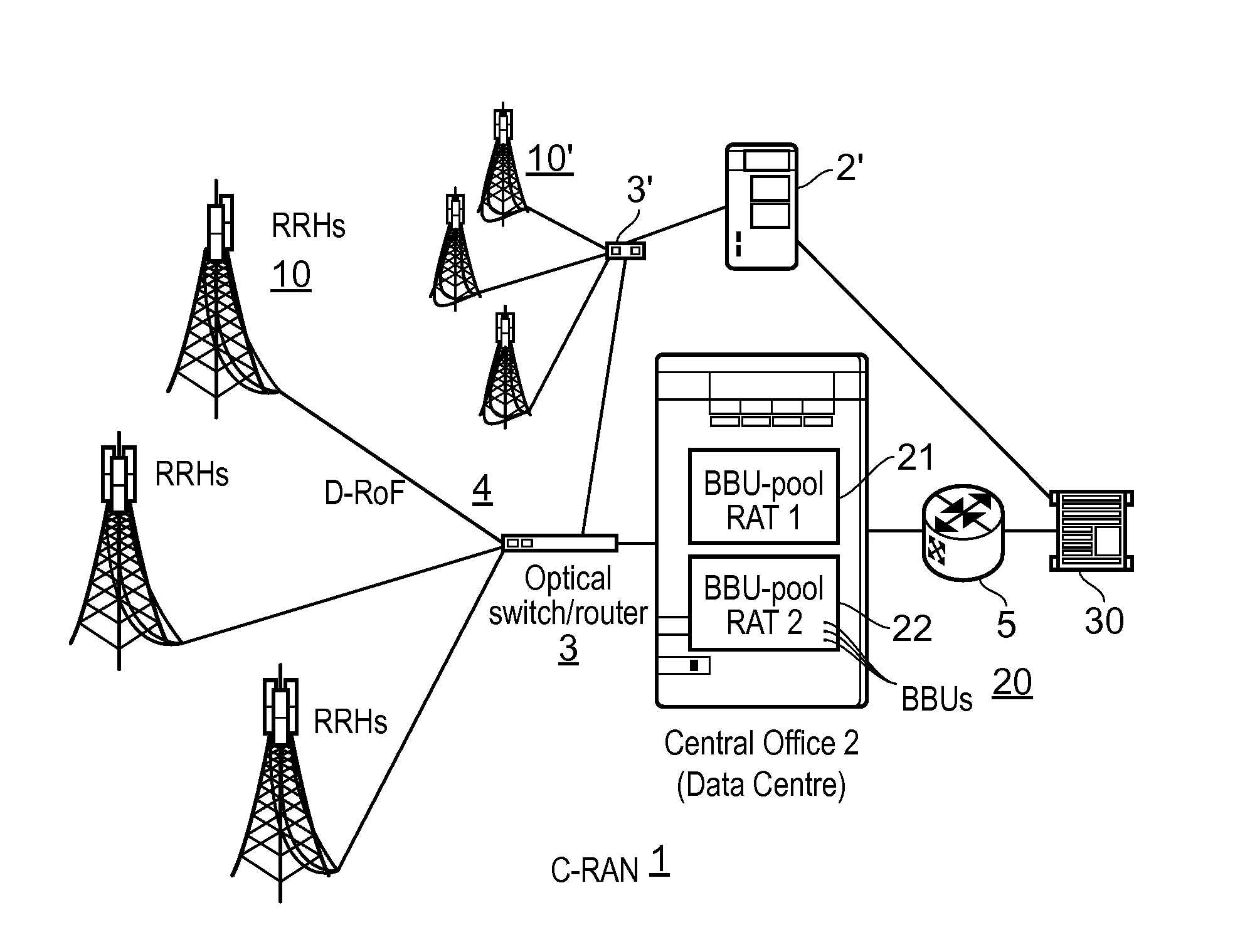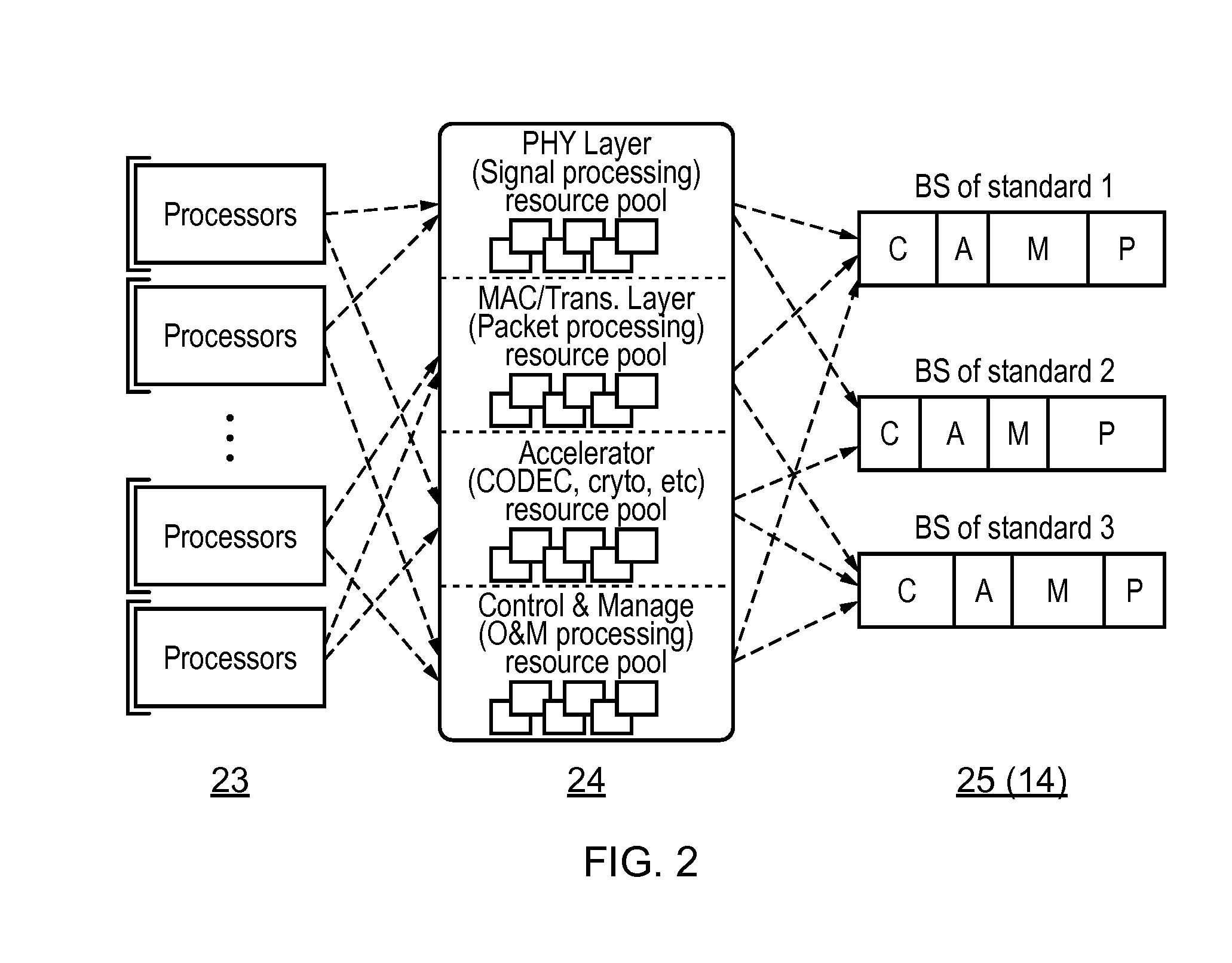Resource management in cloud-based radio access network
- Summary
- Abstract
- Description
- Claims
- Application Information
AI Technical Summary
Benefits of technology
Problems solved by technology
Method used
Image
Examples
Embodiment Construction
[0088]Embodiments of the present invention provide a multi-level service-centric resource management mechanism in a cloud based virtualised network that is shared by multiple operators including virtual operators (VNOs). It is assumed that a virtual network is created for a specific virtual operator. One virtual network comprises one or more virtual service anchors (vSAs), and the coverage footprint and the capacity of the virtual network vary corresponding to the demand of the subscribers of this virtual operator. In principle the coverage footprint of one virtual network could extend to an entire country, in which case the corresponding vSA(s) would be distributed over different geographical areas of the country.
[0089]The vSA, a novel concept in the present invention, is service-specific and operator-specific. In other words, one virtual operator can have multiple vSAs, and one vSA belongs to one and only one virtual operator (VNO). Normally there is only one vSA for one service o...
PUM
 Login to View More
Login to View More Abstract
Description
Claims
Application Information
 Login to View More
Login to View More - R&D
- Intellectual Property
- Life Sciences
- Materials
- Tech Scout
- Unparalleled Data Quality
- Higher Quality Content
- 60% Fewer Hallucinations
Browse by: Latest US Patents, China's latest patents, Technical Efficacy Thesaurus, Application Domain, Technology Topic, Popular Technical Reports.
© 2025 PatSnap. All rights reserved.Legal|Privacy policy|Modern Slavery Act Transparency Statement|Sitemap|About US| Contact US: help@patsnap.com



